[ad_1]
For your eCommerce website to succeed, it needs to drive traffic.
Without any traffic, you won’t be able to convert visitors into customers. So even if your website looks amazing and offers incredible products, no traffic means no sales.
Let’s start with the bad news: the eCommerce space is insanely competitive, so there are a lot of other online stores you need to compete against for traffic.
However, the good news is that digital marketing gives you endless opportunities to generate traffic – no matter how big or well-established your business is.
To help you increase traffic (and increase sales), here are some of the best tactics any eCommerce store can use.
- Optimize Your Ecommerce Website for Search Engines
- Consider Paid Search
- Use Your Social Channels
- Work With Influencers
- Create Great Content
- Use PR to Drive Awareness
- Tap Into the Power of Retargeting
- Use Email Marketing
- Run Affiliate Ads
- Use Guest Blogging
- Influencer Takeovers
- Run a Referral Program
- Giveaways and Contests
- Utilize Customer Reviews and Testimonials
- Live Streaming and Webinars
- Local SEO
- Collaborate with Industry Experts
- Use Remarketing Emails
- Understand the Value of Your Traffic
1. Optimize Your Ecommerce Website for Search Engines
The first step to generating more traffic to your eCommerce website is optimizing the site for SEO.
Online searches are the main way people and businesses explore new products and services. It plays a crucial role in attracting interested visitors to your website. 46% of product searches start on Google, and 63% of shopping experiences start with an online search.
So, you need to ensure that search engines discover your website and present it to the right audience through search engine optimization (SEO).
SEO involves enhancing the quantity and quality of website traffic, enabling your pages to achieve higher rankings on Google and other search engines for relevant and targeted queries.
To harness the power of search, it’s important to understand what search engines prioritize when evaluating websites. Incorporating relevant keywords, which are the terms people commonly use when searching for your product or service, throughout your website is key.
These keywords should appear naturally in various elements such as headlines, product descriptions, subheadings, title tags, meta descriptions, URLs, and alt text for images.
Check out our guide to small business SEO for more helpful tips you can apply.
2. Consider Paid Search
Sure, generating free traffic from search engines is ideal. However, the online space is insanely competitive for eCommerce sites.
So, if you really want to make an impact and generate traffic fast, then paid search is the way to go.
Boosting your website’s visibility and attracting valuable traffic can be effectively achieved through sponsored listings on search engines. These listings, where businesses pay to appear in search results, offer a fantastic opportunity to increase your online presence.
However, assessing the return on investment (ROI) is crucial to ensure it’s worthwhile. To get this right, make sure to align your keyword spending with strategic marketing decisions, such as capitalizing on high-demand seasons or scheduled major promotions.
By doing so, you maximize the impact and effectiveness of your sponsored listings.
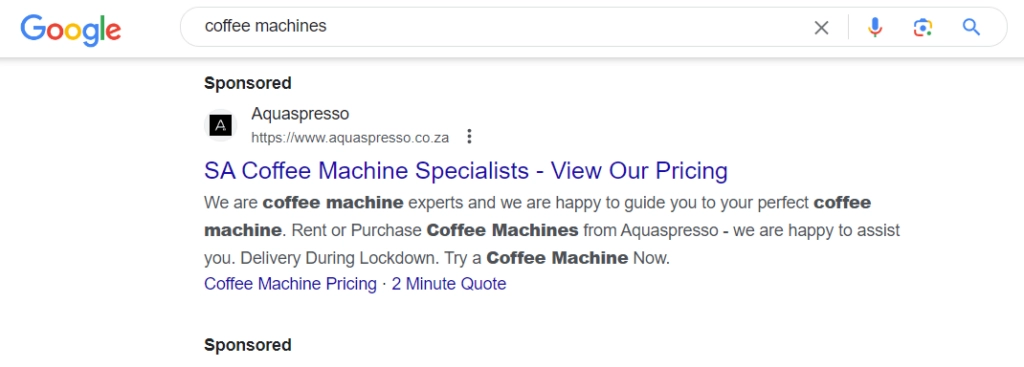
3. Use Your Social Channels
When it comes to online marketing for eCommerce stores, social media is essential.
Getting social media right can help you attract more customers and send more traffic straight to your product pages.
Your social media posts play a vital role in directing relevant visitors to your website, whether they are existing customers or potential prospects who share similar interests.
Leveraging paid social ads on platforms like Facebook and Instagram can also help you generate traffic and entice followers to join your contact list – expanding your communication opportunities.
The importance of staying actively engaged on your social channels should not be underestimated.
Do this by regularly monitoring for posting or responding opportunities. It’s crucial to maintain a human touch in your social strategy by promptly addressing comments and feedback.
Here’s a full guide on how to use social media for eCommerce for more tips you can apply.
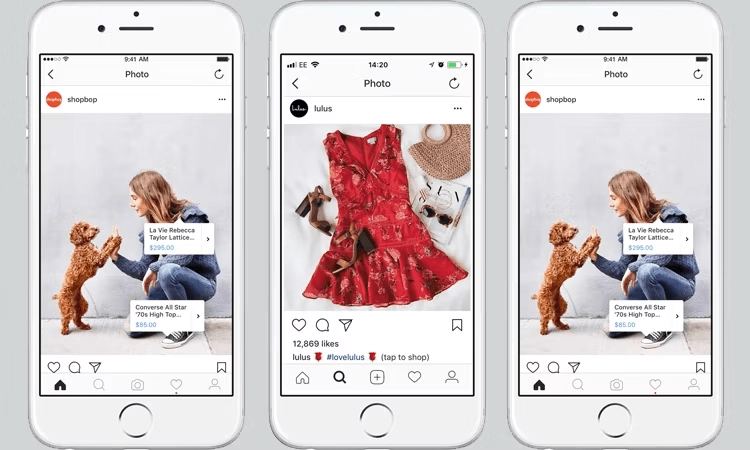
4. Work With Influencers
Looking to drive traffic to your eCommerce website?
Teaming up with influencers is one of the best ways to do it.
When the right influencers showcase your products in an authentic way, it can play a major role in raising awareness and improving your visibility.
It’s all about partnering with influencers who have a strong influence over your ideal customers. By collaborating with them, you can drive customer behavior and direct traffic back to your website.
Make sure to offer valuable content to their audience, like behind-the-scenes insights, fun contests, or exciting giveaways. This way, you’ll tap into their reach and attract more visitors to your eCommerce website.

5. Create Great Content
Creating top-notch content is a powerful way to drive traffic to your eCommerce website.
By publishing original articles on your own blog or industry websites, you establish yourself as a trusted thought leader.
When customers view you as an authoritative source of valuable information, they’ll naturally turn to your website when they’re ready to make a purchase.
Content will also boost your SEO efforts and form the basis of your other marketing channels (like social media).
Remember, focus on providing helpful how-to guides and educational content rather than pushy sales pitches. This approach demonstrates your expertise and builds trust with your audience.
If you’re stuck on ideas, consider sharing best practices or practical tips that address your audience’s most pressing problems.
Once you’ve crafted your content, don’t forget to share and promote it through your social media channels and email marketing.
Spread the word and watch the traffic roll in!

6. Use PR to Drive Awareness
Public relations (PR) can be used to generate traffic for your eCommerce website, even on a budget. Whether you handle it yourself or enlist the help of a small agency or freelancer, there are numerous opportunities.
Local publications and websites are constantly seeking captivating stories, and reaching out to their editors with a compelling pitch can result in excellent visibility and attract high-potential website traffic.
To increase your chances of success, take the time to research the specific website or publication you’re targeting. This way, you can approach editors with ideas that truly resonate with their readership or community.
For instance, if your eCommerce store collaborates with a local elementary school to provide supplies for remote learning, you can pitch a human-interest angle that highlights your company’s contribution.
By sharing meaningful stories, you’ll grab the attention of both the media and potential visitors to your website.
7. Tap into the Power of Retargeting
Want to bring back potential customers who left your eCommerce website without making a purchase? Retargeting display ads are the answer.
These ads provide a second chance to connect with people who showed interest by visiting your site or adding items to their cart, enticing them to return.
These ads work their magic by re-engaging shoppers on social media or other websites after they’ve left your site. When customers visit but don’t convert, you’re leaving potential sales on the table.
Just keep in mind that retargeting can be pricey, so it’s crucial to allocate your budget where it can have the greatest impact.
Don’t miss out on reclaiming those missed opportunities! Follow our guide on retargeting vs. remarketing for more details.
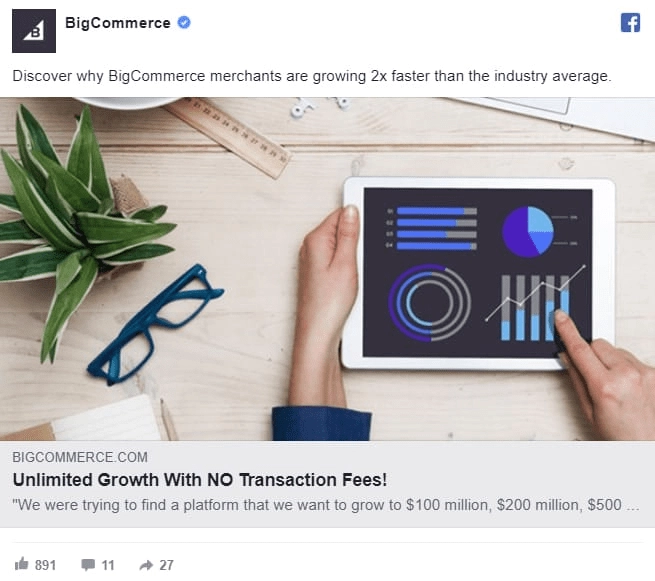
8. Use Email Marketing
Harnessing the power of email marketing is a great way to boost traffic to your eCommerce website.
Many buyers still prefer email as their primary means of communication, making it a valuable channel to engage with your existing audience.
The best part? You can automate various types of emails that connect with customers at different stages of their journey, requiring minimal effort on your part.
These include welcoming new customers to your brand, reminding potential buyers about their abandoned carts, showcasing your best-selling items, and more.
Once you have your automations set up, there isn’t much work involved. These automated emails can adapt based on your customers’ behaviors, guiding them back to your website.
It’s an efficient way to stay connected and drive traffic without consuming all your time.
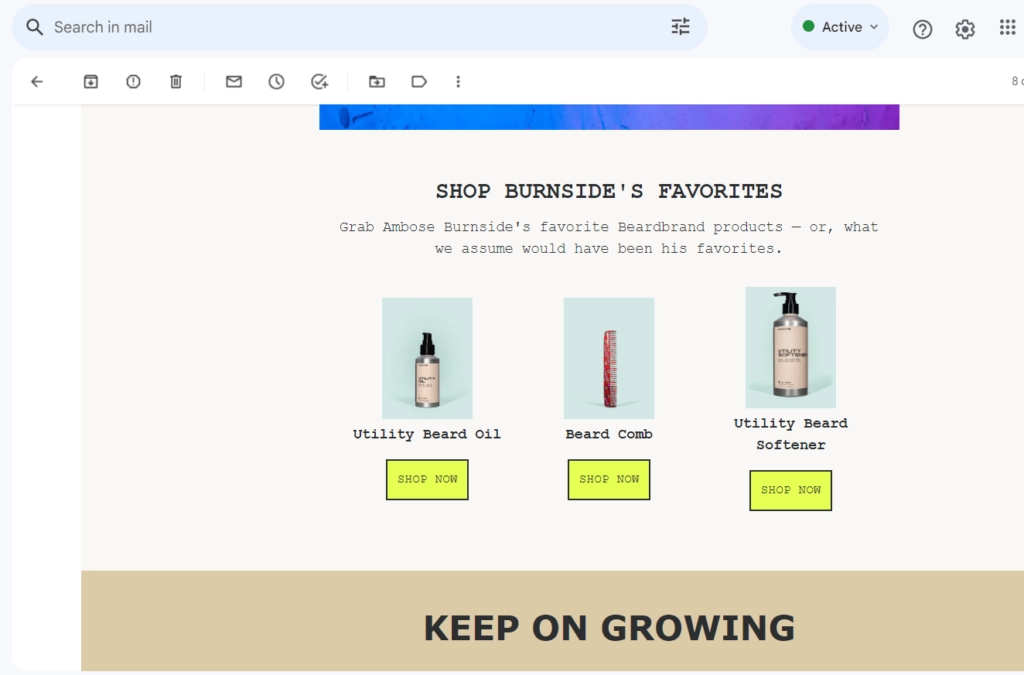
9. Run Affiliate Ads
An effective strategy to generate traffic for your eCommerce website is through affiliate ads.
This involves collaborating with other websites or publishers, known as affiliates, who promote your products. For instance, a popular Italian recipe blog could showcase a pasta maker that readers can use to create delicious homemade fettuccine.
The beauty of affiliate marketing is that it’s performance-based, meaning affiliates earn a commission for sales made through the links on their sites.
Leveraging promotions via affiliate networks, such as enticing discounts or enticing Buy-One-Get-One-Free (BOGO) offers, can be a game-changer in attracting new customers and driving both traffic and sales.
It’s wise to start slowly when working with affiliates, allowing you to gauge performance before deciding to expand your program.
Remember to choose offers that truly stand out and capture attention for the best possible results.

10. Use Guest Blogging
Guest blogging can be a powerful strategy for driving traffic to your eCommerce store.
By contributing guest posts to authoritative blogs in your industry, you can tap into their existing readership and attract new visitors to your store.
When crafting guest blog posts, it’s important to provide valuable, informative, and engaging content that resonates with the target audience of the host blog. Include a link back to your eCommerce store within the post or author bio, directing readers to learn more about your products or services.
Guest blogging helps you build brand visibility and credibility and establishes relationships with influencers and industry leaders. This expands your reach and drives targeted traffic to your store.

11. Influencer Takeovers
Influencer takeovers can be a highly effective method to drive traffic to your eCommerce store. This is one of the best influencer marketing trends for any eCommerce store to tap into.
By allowing influencers in your niche to take control of your social media accounts for a day, you can leverage their dedicated following and engage with their audience directly.
During the takeover, the influencer can create compelling content, showcase your products, and provide exclusive offers or discounts, encouraging their followers to visit your store.
This strategy not only exposes your brand to a wider audience but also builds trust and credibility through the influencer’s endorsement.
Influencer takeovers can generate significant traffic and conversions for your eCommerce store by collaborating with relevant and influential individuals.

12. Run a Referral Program
Referral programs are an effective way to drive traffic to your eCommerce store through the power of word-of-mouth marketing.
By encouraging your existing customers to refer their friends and family to your store, you can tap into their networks and attract new visitors.
Implementing a referral program involves providing incentives, such as discounts, store credits, or exclusive perks, to customers who successfully refer others.
This rewards your loyal customers and motivates them to actively promote your store.
By leveraging your existing customers’ trust and personal connections, referral programs can generate a steady stream of targeted traffic and increase customer acquisition, leading to long-term growth for your eCommerce store.
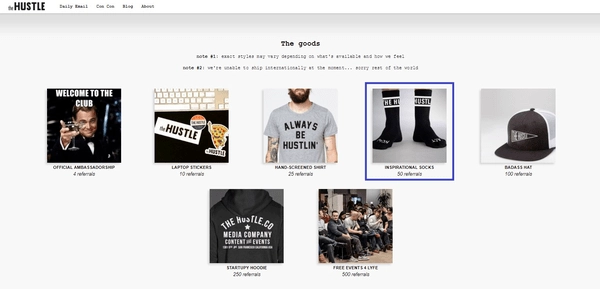
13. Giveaways and Contests
Online contests and giveaways are highly engaging and effective methods to drive traffic to your eCommerce store.
Organizing contests or giveaways on social media platforms can generate excitement and attract a larger audience.
The prospect of winning a prize incentivizes participants to visit your store, explore your products, and potentially make a purchase.
To maximize the impact of your contests and giveaways, ensure that the prizes are appealing and relevant to your target audience.
Incorporate social sharing requirements or referral components into the contests, encouraging participants to share the contest with their friends and family, thereby expanding your reach and driving even more traffic to your eCommerce store.

14. Utilize Customer Reviews and Testimonials
Customer reviews and testimonials play a crucial role in driving traffic to your eCommerce store.
Positive reviews and testimonials act as social proof, building trust and credibility among potential customers.
By encouraging satisfied customers to leave reviews and testimonials on your website or review platforms, you can showcase the positive experiences others have had with your products or services.
These reviews not only attract new visitors but also influence purchasing decisions.
To maximize their impact, actively engage with customers, respond to reviews, and display them prominently on your website.
By leveraging the power of customer feedback, you can establish a positive reputation and drive more traffic to your eCommerce store.
15. Live Streaming and Webinars
Live streaming and webinars are powerful methods to drive traffic to your eCommerce store.
You can engage with your audience in real time by hosting live sessions, showcasing your products, offering exclusive deals, and providing valuable insights or educational content.
Live streaming allows direct interaction, enabling viewers to ask questions and receive immediate responses.
Webinars, on the other hand, offer a structured format for in-depth presentations and demonstrations.
Promoting your live-streaming events and webinars through various channels can attract a larger audience and generate excitement around your brand. This strategy drives traffic to your eCommerce store and helps establish your expertise, build trust, and increase conversions.
16. Local SEO
Local SEO is critical for driving targeted traffic to your eCommerce store from specific geographic regions.
By optimizing your website and online presence for local search, you can increase visibility and attract potential customers in your area.
This involves incorporating location-specific keywords, creating local business listings on platforms like Google Business Profile, and optimizing your content for local relevance.
Actively encouraging customers to leave local reviews can boost your local search rankings. By focusing on local SEO, you can target customers who are actively seeking products or services in your area, increasing foot traffic to your physical store or driving online sales from local customers.
17. Collaborate With Industry Experts
Collaborating with industry experts is a strategic approach to drive traffic to your eCommerce store.
By partnering with experts in your field, you gain access to their knowledge, credibility, and loyal following.
This collaboration can take various forms, such as co-creating valuable content, conducting joint webinars, or hosting interviews with industry leaders. By leveraging the expertise and influence of these experts, you can attract their followers to your store.
This expands your reach, builds trust, and positions your brand as an authority in the industry.
Collaborating with industry experts helps drive targeted traffic and fosters long-term relationships with potential customers.
18. Use Remarketing Emails
Remarketing emails are a highly effective strategy to drive traffic back to your eCommerce store.
By targeting users who have abandoned their shopping carts, remarketing emails serve as gentle reminders and incentives to complete their purchases.
These personalized emails can include dynamic content, such as product recommendations or exclusive discounts, tailored to the specific items left behind. By strategically timing and crafting compelling remarketing emails, you can re-engage potential customers, reignite their interest, and encourage them to return to your store.
Remarketing emails not only drive traffic but also have the potential to boost conversions and recover lost sales, making them a valuable tool in your eCommerce marketing arsenal.
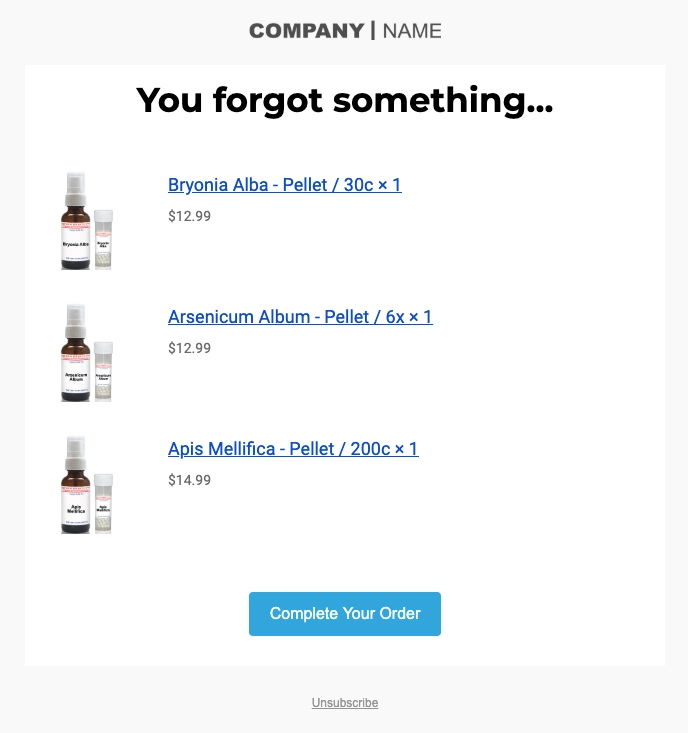
Understand the Value of Your Traffic
When it comes to running an eCommerce store, the true measure of website traffic lies in conversions.
Are the visitors actually making purchases?
However, there are other crucial metrics that determine the quality of your website traffic.
Pay attention to how long visitors stay on the pages you direct them to and where they go next. It’s equally important to analyze the behavior of those who arrive but quickly leave.
If people ‘bounce,’ which means they land on your site and immediately navigate away, it could signal the need to reassess your landing pages. Understanding what resonates with your audience and what doesn’t will empower you to make informed decisions about your content, ultimately boosting your conversions.
Remember, keeping a close eye on these insights is key to optimizing your website and enhancing its performance.
Conclusion
Once you’ve set up an awesome eCommerce store, the next step is to generate as much relevant traffic to that store as you can. Without this, you won’t be able to generate any sales.
Just remember that relevant traffic is essential. Your aim isn’t to get as many people visiting your site as possible. Instead, you aim to get as many potential customers on your site as possible. This includes understanding your target audience and knowing what digital channels to use to attract them.
Try the strategies above, and you should be able to generate a lot more traffic without too much effort. This is critical for eCommerce success.
![]() tom
tom
[ad_2]
Source link









